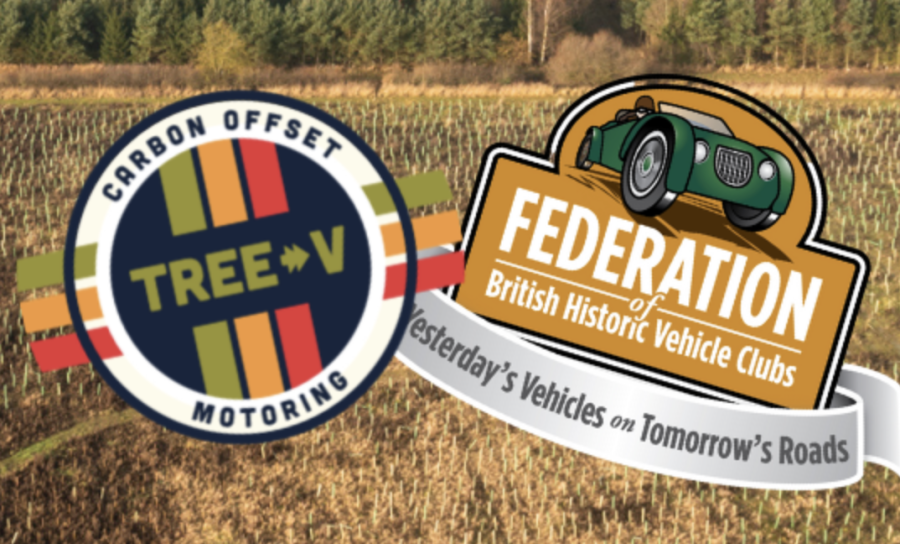Wythall captures carbon from its heritage bus running fleet

Published: 26/07/2023
Transport Museum Wythall is proud to announce that it will be carbon capturing all miles driven by its heritage bus fleet on its annual events program and running days.
As members of the Federation of British Historic Vehicle Clubs (FBHVC), TMW is excited to take part in their Carbon Balancing Scheme in partnership with Tree-V.
What are we carbon capturing?
Entry to the museum includes free bus rides and a local station pick up service enabling the option for visitors to give up their cars and travel via the local railway.
Working with Tree-V and the FBHVC’s research team we have computed the total annual mileage run by our heritage bus fleet across all our running and special event days allowing a precise estimation of carbon emitted by different vehicles. The result – 4,500 miles balanced, 4.37 tonnes captured and 13 trees planted.
Although its individual impact is minimal, the museum wishes to ‘do its bit’ and encourage other such establishments to join in as Tree-V and FBHVC make it easy.
TMW has chosen this particular route as it means that new forests will be planted in the UK, as opposed to carbon offsetting which is the protection of established forests overseas. This is an exciting choice as it will aid the reforestation of the UK and see the creation of valuable new habitat.
Why are we taking this step?
As members of the historic vehicle movement we have all probably experienced some form of criticism for the emissions coming from our vehicles.
Sadly our vehicles can attract as much attention for their emissions as they do their looks. However, even though our overall impact is minimum, as a museum there is a role we can play in helping to tackle such criticism and that is by taking part in a scheme like this.
By ensuring emissions associated with our museum’s activities are tackled we can fight back against the naysayers. The carbon footprint of our vehicle’s production has been spread over many, many years and by definition we are a community that is all about recycling and restoration.
By then balancing out the emissions from miles travelled, we have mitigated the only real carbon footprint our vehicle has - meaning we have some of the greenest vehicles on the road!
As a museum we are also keen to play our part in the FBHVC’s scheme as, by adding our voice to an industry wide scheme, it allows us all to unite under a green banner and demonstrate to the outside world we’re a responsible community that cares about the planet.
Our trees
Our trees are being planted in Tom’s Wood in North Yorkshire. A wide variety of trees can be used for carbon capture, the FBHVC and Tree-V always make sure to use trees that are native to the area and that are best suited to the climate, soil time, rainfall and numerous other factors. Tom’s Wood is made up of a mix of Alder, Birch, Wild Cherry, Goat Willow and Sycamore.
The FBHVC/Tree-V carbon capturing initiative
Launched in December 2021 the FBHVC’s scheme, delivered in partnership with Tree-V, is gaining momentum.
The first year was a huge success with 2,454,787 miles carbon balanced, 3880 trees planted and 1294 tonnes of CO2 captured and removed from the atmosphere. TMW is glad that the museum’s contribution can be added to this cumulative total - showing the wider public and lawmakers that it is taking its carbon footprint seriously.
The FBHVC’s research team is able to put together a range of carbon balancing products that are matched with vehicle categories tracked by the FBHVC survey and available in different mileage bands – again matched to data gathered by the survey.
How does it work?
Why do trees absorb our carbon dioxide emissions? Trees need carbon dioxide to live and grow. Trees take in carbon dioxide through small pores in their leaves and combine it with H2O and sunlight, in a process known as photosynthesis. This process converts CO2 into sugar which can be used or stored by the tree as energy.
The storage of this sugar, as starch, in the sapwood layer of the tree, is how trees remove CO2 from the atmosphere. As long as the tree is never burned down, that carbon is permanently absorbed.
For more information please visit www.trees.fbhvc.co.uk










